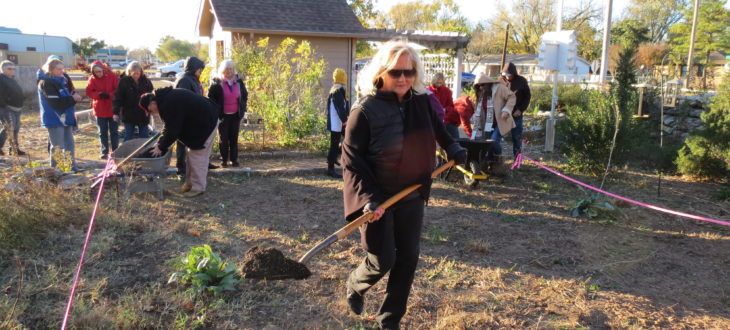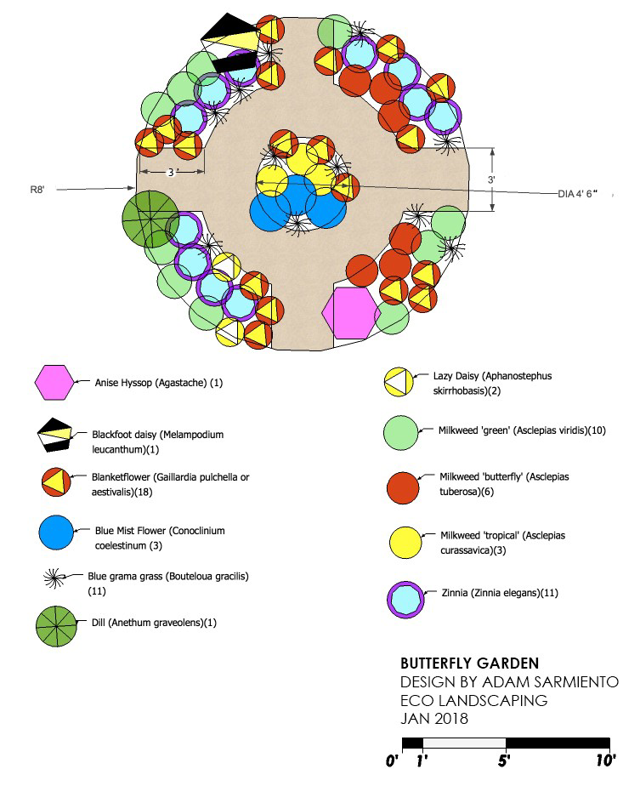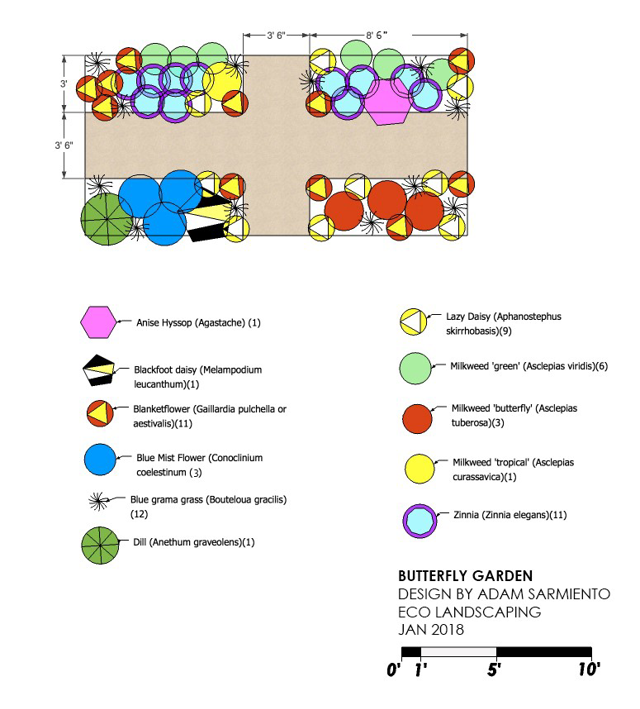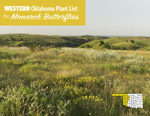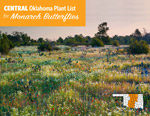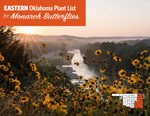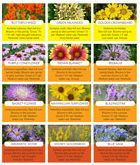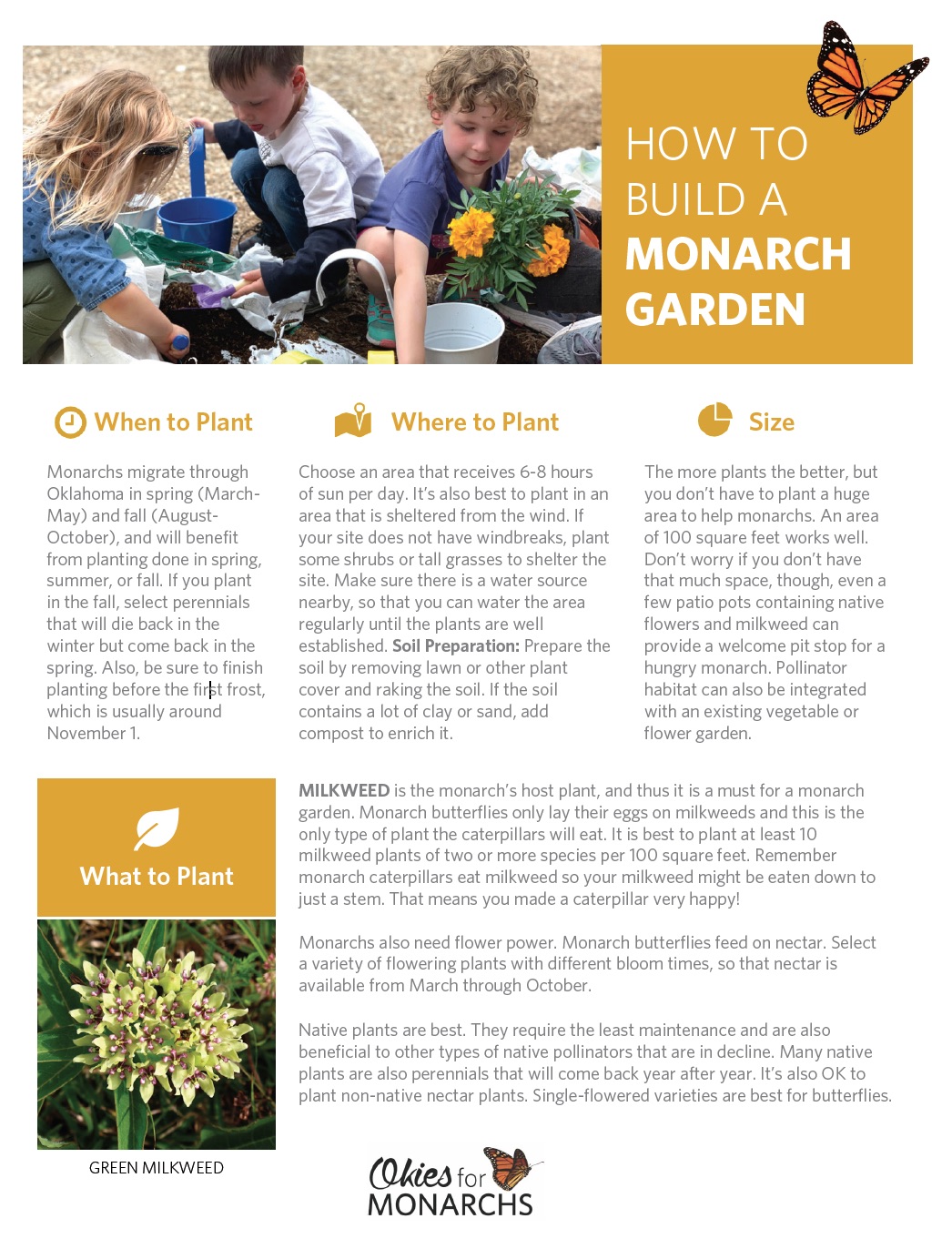Milkweed is the monarch’s host plant, and thus it is a must for a monarch garden. Monarch butterflies only lay their eggs on milkweeds and this is the only type of plant the caterpillars will eat. It is best to plant at least 10 milkweed plants of two or more species per 100 square feet. Remember monarch caterpillars eat milkweed so your milkweed might be eaten down to just a stem. That means you made a caterpillar very happy!
Monarchs also need flower power. Monarch butterflies feed on nectar. Select a variety of flowering plants with different bloom times, so that nectar is available from March through October.
Research shows that if you get several of each plant species and plant each species in clumps, it provides for a bigger advertisement for the insects that happen by.
Native plants are best. They require the least maintenance and are also beneficial to other types of native pollinators that are in decline. Many native plants are also perennials that will come back year after year. It’s also OK to plant non-native nectar plants. Single-flowered varieties are best for butterflies.
Most importantly, only purchase plants from nurseries that do not use systemic insecticides or any other pesticides on their plants. These plants can be harmful to pollinators, including monarchs, and their caterpillars.
Plugs Versus Seeds: For small gardens, plant plugs (plants that have germinated and are ready for planting) for best and fastest results. In larger areas, seed mixes and milkweed seeds may be more cost-effective. Planting a combination of plugs and seeds is helpful for establishing beneficial habitat more quickly in these areas.

